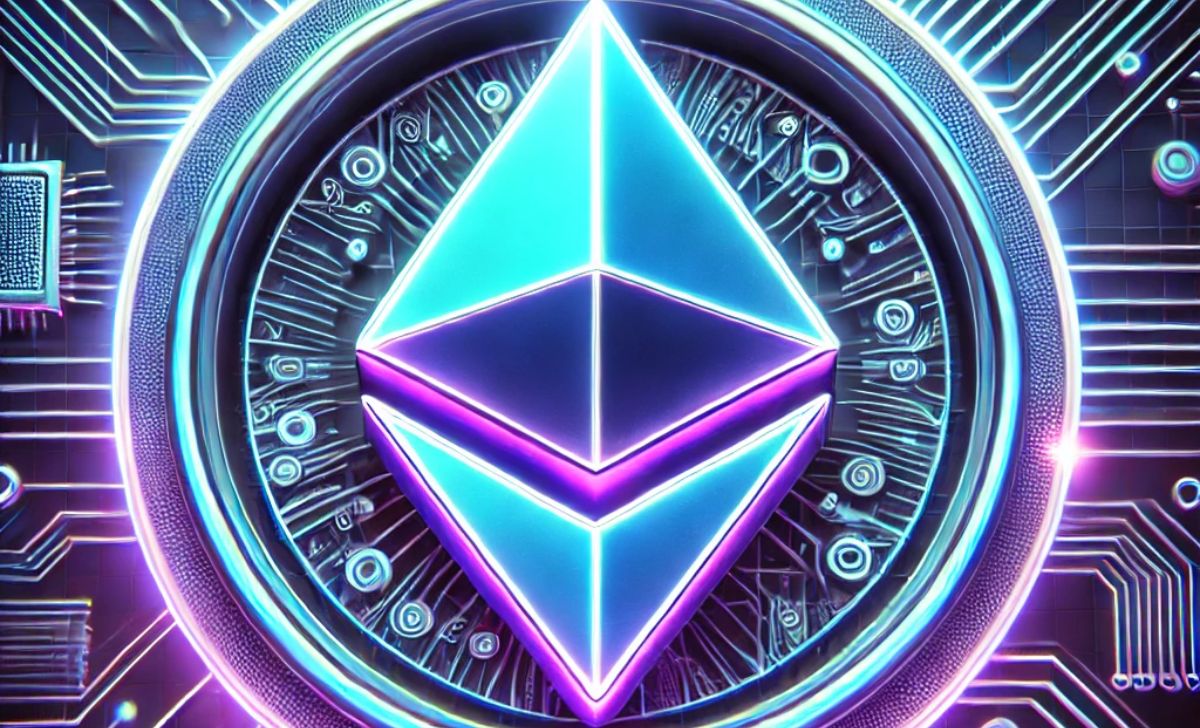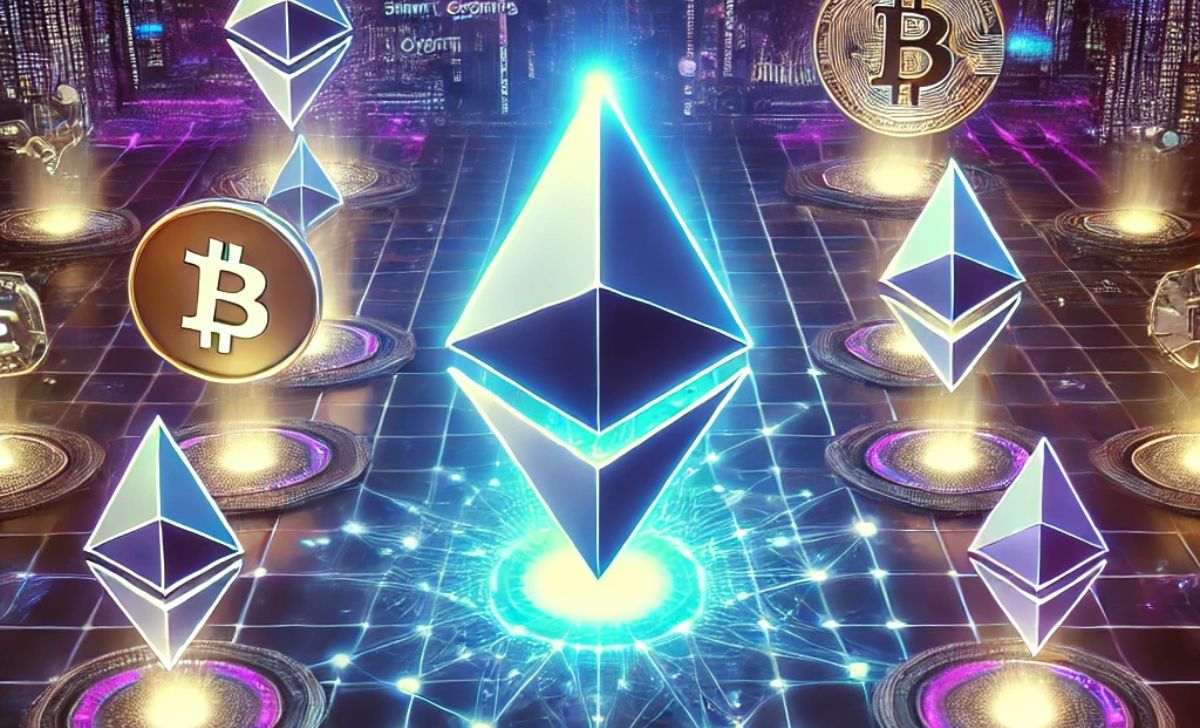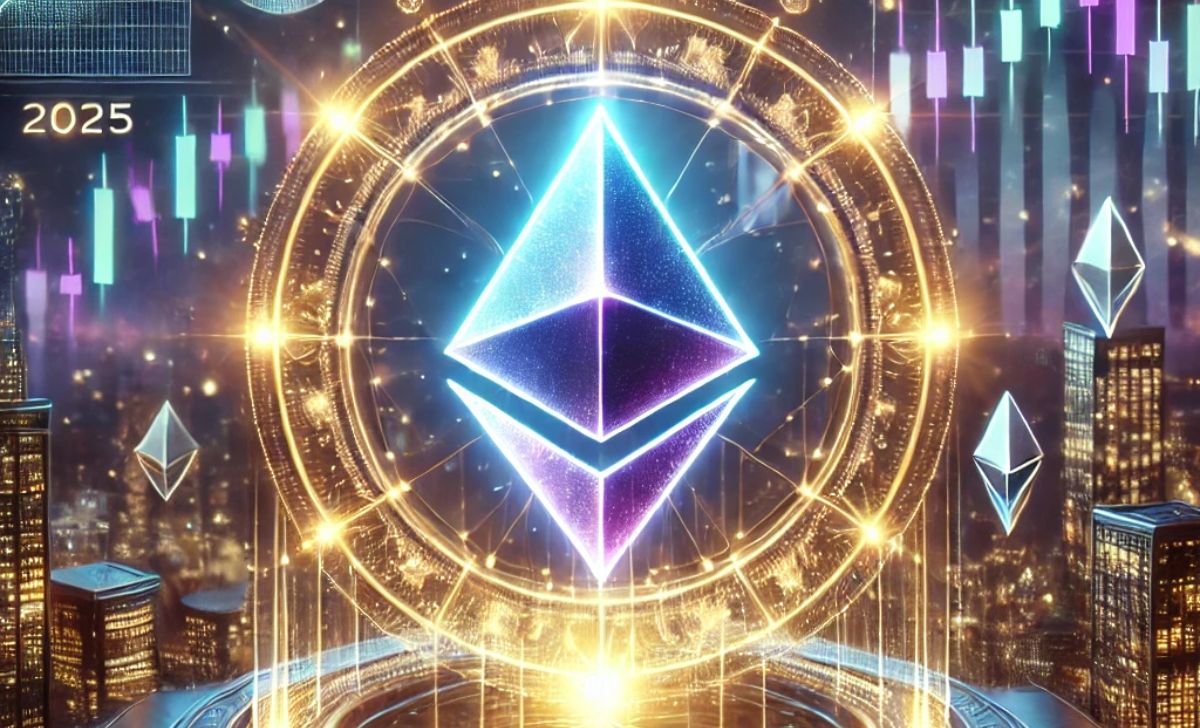Ethereum Price (ETH/USDT)
Ethereum price prediction has become a hot topic among investors and traders. With its market volatility, many are eager to know if ETH will surge or decline.
In the future, the question on everyone’s mind is: where is Ethereum headed? This comprehensive guide, TopCoin9 will provide you with an in-depth look at Ethereum, its potential, and the price predictions that are capturing the attention of investors and enthusiasts alike.
Trade on the go. Anywhere, anytime.
Bybit delivers a fast, secure, and feature-rich platform for crypto trading!
OKX offers secure trading for 300+ cryptocurrencies.
Check-in daily to earn $50 in crypto strategic reserve currencies instantly!
Better Liquidity, Better Trading, Global Crypto Derivatives Exchange
The Global Cryptocurrency Exchange - Your Crypto Trading Expert
Trade 600+ Pairs 0% Maker Fees - Earn 30,000 Welcome Bonus
BTSE offers a secure and innovative platform for trading cryptocurrencies.
The Most Efficient Crypto Trading and Investment Platform
Sign Up now to claim a 7700+ USDT welcome gift
Gateway to Digital Asset, Highway to Wealth
Gateway to Crypto - Sign up and win $10,000+ in welcome rewards
What is Ethereum?

What is Ethereum?
Ethereum is a decentralized, open-source blockchain platform that has revolutionized the world of digital technology. Unlike Bitcoin, which primarily functions as a digital currency, Ethereum is designed to be a versatile platform for building and deploying decentralized applications (dApps) and smart contracts.
At its core, Ethereum is a global, distributed network of computers that work together to maintain a shared, immutable ledger. This ledger records all transactions and smart contract executions, ensuring transparency and security. The native cryptocurrency of the Ethereum network is Ether (ETH), which is used to pay for transaction fees and computational services on the network.
The Origin of Ethereum
The concept of Ethereum was first proposed in late 2013 by Vitalik Buterin, a young programmer who recognized the limitations of Bitcoin’s scripting language. Buterin envisioned a more flexible and powerful platform that could support a wider range of applications.
In January 2014, Buterin published a white paper outlining his vision for Ethereum. He was joined by a team of co-founders, including Gavin Wood, Charles Hoskinson, and Joseph Lubin, who helped bring the project to life.
Ethereum’s development was funded through an online crowdsale in July 2014, where participants purchased Ether (ETH) in exchange for Bitcoin. This crowdsale raised over $18 million, providing the necessary resources to develop the platform.
The first live version of the Ethereum network, known as Frontier, was launched on July 30, 2015. This marked the beginning of Ethereum’s journey as a leading blockchain platform.
Key concepts:
- Blockchain Technology: Ethereum is built on blockchain technology, a distributed ledger system that records transactions across a network of computers. This technology ensures transparency, security, and immutability.
- Decentralization: Ethereum is a decentralized platform, meaning it is not controlled by any single entity. This decentralization makes it resistant to censorship and single points of failure.
- Smart Contracts: Smart contracts are self-executing contracts with the terms of the agreement between buyer and seller being directly written into lines of code. They allow automated and trustless transactions without the need for intermediaries.
Ethereum’s innovative features and its ability to support a wide range of applications have made it a cornerstone of the blockchain industry. So what is the core component of Ethereum? Please continue reading below.
Ethereum Core Components

Ethereum core components
To fully understand Ethereum, it’s essential to delve into its core components, which enable its functionality and versatility. Here are the main components of Ethereum:
Ethereum Virtual Machine (EVM):
- The EVM is the runtime environment for smart contracts in Ethereum. It executes the code of smart contracts, ensuring that they operate consistently across the network.
- It’s a Turing-complete virtual machine, meaning it can execute any computational task, given enough memory and time.
Smart Contracts:
- These are self-executing contracts with the terms of the agreement directly written into code.
- They automate the execution of agreements, reducing the need for intermediaries and increasing trust.
- Smart contracts are the foundation for dApps and DeFi applications.
- Ethereum’s blockchain is a distributed ledger that records all transactions and smart contract executions.
- It’s secured by a network of nodes that validate and verify transactions.
- The blockchain’s immutability ensures that once a transaction is recorded, it cannot be altered.
Ether (ETH):
- ETH is the native cryptocurrency of the Ethereum network.
- It’s used to pay for transaction fees (gas) and to incentivize nodes to validate transactions.
- ETH also serves as a store of value and is traded on cryptocurrency exchanges.
Nodes:
- Nodes are computers that run Ethereum software and participate in the network.
- They store a copy of blockchain and validate transactions.
- Nodes play a crucial role in maintaining the security and integrity of the network.
Gas:
- Gas is the unit that measures the computational effort required to execute operations on the Ethereum network.
- Gas fees are paid in ETH and fluctuate based on network demand.
- Gas is essential for preventing spam and ensuring that network resources are used efficiently.
Consensus Mechanisms:
- Ethereum has transitioned from a Proof-of-Work (PoW) consensus mechanism to a Proof-of-Stake (PoS) consensus mechanism.
- PoS allows validators to stake their ETH to validate transactions and secure the network, which is more energy-efficient than PoW.
These core components work together to create a robust and versatile platform that can support a wide range of decentralized applications. So what makes Ethereum different from other blockchains? Please see the next parts for details.
Ethereum vs. Other Blockchains

Ethereum vs other blockchain
Ethereum is one of the best crypto to buy now, and while it is an emerging force in the blockchain space, it is not the only one on the market. Several other blockchains have emerged, each with its own features and capabilities. Here is how Ethereum compares to some of its notable counterparts:
Ethereum vs. Bitcoin:
- While both are decentralized blockchains, their primary purposes differ. Bitcoin is primarily a digital currency, while Ethereum is a platform for building decentralized applications (dApps) and smart contracts.
- Ethereum’s smart contract functionality gives it a broader range of applications compared to Bitcoin.
Ethereum vs. Solana:
- Solana is known for its high transaction speed and low fees, addressing some of Ethereum’s scalability challenges.
- However, Ethereum has a larger and more established ecosystem, with a greater number of dApps and developers.
Ethereum vs. Cardano:
- Cardano emphasizes a research-driven approach to development, focusing on security and scalability.
- Ethereum has a more mature ecosystem, but Cardano is gaining traction with its focus on formal verification and peer-reviewed research.
Ethereum vs. Binance Smart Chain (BSC):
- BSC offers faster transaction speeds and lower fees than Ethereum, making it attractive for DeFi applications.
- However, BSC is more centralized than Ethereum, which raises concerns about security and censorship resistance.
How does Ethereum work? Please see details below.
How Does Ethereum Work?

Ethereum work
Ethereum operates as a decentralized, open-source blockchain platform that enables the creation and execution of smart contracts and decentralized applications (dApps). Here’s a breakdown of how Ethereum works:
Blockchain Technology:
- Ethereum is built on blockchain technology, a distributed ledger system that records transactions across a network of computers.
- This technology ensures transparency, security, and immutability.
Nodes and Network:
- The Ethereum network consists of a network of nodes, which are computers that run Ethereum software.
- These nodes store a copy of blockchain and validate transactions.
- When a transaction is initiated, it’s broadcast to the network and validated by the nodes.
Transactions and Smart Contracts:
- Transactions on Ethereum can involve the transfer of Ether (ETH) or the execution of smart contracts.
- Smart contracts are self-executing contracts with the terms of the agreement written into code.
- When a smart contract is executed, the results are recorded on the blockchain.
Ethereum Virtual Machine (EVM):
- The EVM is the runtime environment for smart contracts on Ethereum.
- It executes the code of smart contracts, ensuring that they operate consistently across the network.
- Gas, which is paid by ETH, is used to measure the computational effort required to execute operations on the EVM.
Consensus Mechanism:
- Ethereum has transitioned from a Proof-of-Work (PoW) consensus mechanism to a Proof-of-Stake (PoS) consensus mechanism.
- PoS allows validators to stake their ETH to validate transactions and secure the network.
- This transition has improved the network’s energy efficiency and scalability.
Gas Fees:
- Gas fees are paid in ETH and are used to compensate nodes for validating transactions and executing smart contracts.
- The amount of gas required for a transaction depends on the complexity of the operation.
- Gas fees fluctuate based on network demand.
In essence, Ethereum operates as a global, decentralized computer that can execute a wide range of applications and transactions. This functionality has made Ethereum a leading platform in blockchain space. So what role does Ethereum play in the electricity market? Please continue to follow below.
Ethereum Role in the Crypto Ecosystem

Ethereum role in the crypto ecosystem
Ethereum has become a cornerstone of the broader cryptocurrency ecosystem, playing a pivotal role in driving innovation and adoption. Its versatility and robust infrastructure have enabled the development of numerous groundbreaking applications and technologies.
Decentralized Finance (DeFi)
Ethereum has been instrumental in the rise of Decentralized Finance (DeFi). DeFi aims to recreate traditional financial services on blockchain, eliminating the need for intermediaries. Ethereum’s smart contract capabilities have allowed developers to build a wide range of DeFi applications, including:
- Decentralized exchanges (DEXs) like Uniswap and SushiSwap, which enable peer-to-peer trading of cryptocurrencies.
- Lending and borrowing platforms like Aave and Compound, which allow users to earn interest on their crypto assets or borrow from them.
- Stablecoins like DAI and USDC, which are designed to maintain a stable value and facilitate transactions.
- Yield farming and liquidity mining, which incentivize users to provide liquidity to DeFi protocols.
DeFi on Ethereum has democratized access to financial services, offering greater transparency, efficiency, and accessibility.
Non-Fungible Tokens (NFTs)
Ethereum has also been the primary platform for the creation and trading of Non-Fungible Tokens (NFTs). NFTs are unique digital assets that represent ownership of a specific item, such as digital art, collectibles, or virtual real estate. Ethereum’s ERC-721 and ERC-1155 token standards have facilitated the creation of countless NFT projects.
- Digital art marketplaces like OpenSea and Rarible, where artists can sell their digital creations.
- Collectible projects like CryptoPunks and Bored Ape Yacht Club, which have gained significant popularity and value.
- Gaming NFTs, which represent in-game items and characters.
- Virtual land in metaverse projects.
NFTs on Ethereum have revolutionized the way digital assets are created, owned, and traded, opening up new avenues for creators and collectors.
Web3 and the Future of the Internet
Ethereum is a key component of the emerging Web3 movement, which aims to create a decentralized and user-controlled internet. Web3 leverages blockchain technology to build applications that are more secure, transparent, and resistant to censorship.
- Decentralized identity solutions, which give users control over their personal data.
- Decentralized storage solutions, which allow users to store data in a distributed manner.
- Decentralized social media platforms, which give users greater control over their content and interactions.
- Decentralized autonomous organizations (DAOs), which enable collective decision-making and governance.
Ethereum’s infrastructure and smart contract capabilities are essential for building decentralized applications that will power Web3. As Web3 continues to evolve, Ethereum is poised to play a central role in shaping the future of the internet.
Factors Influencing Ethereum Price in 2025

Ethereum price 2025
Predicting the price of any cryptocurrency, including Ethereum, is inherently speculative. However, several key factors are likely to influence Ethereum’s price trajectory in 2025. Below are the main influencing factors:
Market Trends
The first factor is the market trend, specifically as follows:
- DeFi Growth: The continued expansion of Decentralized Finance (DeFi) on the Ethereum network will play a significant role. Increased adoption of DeFi protocols, lending platforms, and decentralized exchanges could drive demand for ETH.
- NFT Market: The evolution of the Non-Fungible Token (NFT) market, including its integration with mainstream industries like gaming, art, and entertainment, will impact Ethereum’s price.
- Institutional Adoption: Increased institutional investment in Ethereum, driven by regulatory clarity and the development of institutional-grade custody solutions, could lead to significant price appreciation.
- Mainstream Adoption: The broader acceptance of cryptocurrencies and blockchain technology by the general public will influence Ethereum’s demand and price.
The second is technological upgrades. Please follow the details below.
Technological Upgrades
Technological factors are also one of the components that affect Ethereum prices. Specifically:
- Ethereum 2.0 (The Merge): The successful transition to Proof-of-Stake (PoS) and subsequent upgrades aimed at improving scalability and efficiency will be crucial.
- Layer 2 Solutions: The development and adoption of Layer 2 scaling solutions, such as Optimistic Rollups and zk-Rollups, will address Ethereum’s scalability challenges and potentially drive increased usage.
- EVM Improvements: Enhancements to the Ethereum Virtual Machine (EVM) and the development of new features will impact the platform’s capabilities and attractiveness to developers.
The third is Macro-Economic Factors. Please see details below.
Macro-Economic Factors
Macroeconomic factors affecting Ethereum are as follows:
- Inflation and Interest Rates: Global economic conditions, including inflation rates and interest rate policies, can influence investor sentiment and the demand for alternative assets like Ethereum.
- Regulatory Environment: Regulatory clarity and the development of favorable regulatory frameworks for cryptocurrencies will be essential for attracting institutional investment and fostering mainstream adoption.
- Geopolitical Events: Global events, such as political instability or economic crises, can impact investor confidence and the overall cryptocurrency market.
And finally, that is the Staking and Supply Dynamics factor. You continue to follow.
Staking and Supply Dynamics
Finally, that is the motivation for betting and supply of investors in the market, specifically as follows:
- ETH Staking: The amount of ETH staked on the network will influence its supply and price. Increased staking can reduce the circulating supply, potentially driving up the price.
- Burning Mechanisms: The implementation of burning mechanisms, such as EIP-1559, which burns a portion of transaction fees, can also reduce the circulating supply and impact price.
- Supply Issuance: The rate of new ETH issuance will affect the overall supply and price. Changes to the issuance rate, such as those introduced by Ethereum 2.0, will be significant.
With the above analysis, what will the ETH price prediction be in 2025? We invite you to see some analysis by experts in the next section.
Ethereum Price Prediction for 2025

Ethereum price prediction 2025
Predicting the future price of Ethereum is a complex task, but by analyzing historical data, expert opinions, and potential market scenarios, we can gain insights into its possible trajectory in 2025. Here are some ETH price predictions for 2025:
Historical Price Performance
Does historical price performance impact current ETH price? You can see the analysis:
- Past Trends: Analyzing Ethereum’s historical price charts reveals periods of significant growth and volatility. Understanding past market cycles and key price levels can provide context for future predictions.
- Key Milestones: Identifying significant events, such as major upgrades, partnerships, and market crashes, can help assess their impact on Ethereum’s price.
- Market Capitalization and Volume: Tracking Ethereum’s market capitalization and trading volume can provide insights into its overall market health and investor interest.
Some reviews from market experts, you can continue to see below.
Expert Opinions and Market Sentiment
Some opinions of market experts on ETH price in 2025:
- Analyst Forecasts: Examining price predictions from reputable analysts and financial institutions can provide a range of potential outcomes.
- Community Sentiment: Monitoring social media, forums, and news outlets can help gauge the overall sentiment of the Ethereum community and its potential impact on price.
- Industry Trends: Staying informed about broader trends in the cryptocurrency and blockchain industries can provide context for Ethereum’s potential growth.
What will Ethereum price be like in 2025 and the following years? We invite you to continue following along.
Price Scenarios for 2025
Some ETH price scenarios in 2025 are as follows:
- Bullish Scenario: In a bullish scenario, Ethereum could experience significant price appreciation driven by increased adoption, technological advancements, and favorable market conditions. Factors such as successful Ethereum 2.0 upgrades, widespread DeFi adoption, and institutional investment could contribute to this scenario.
- Bearish Scenario: In a bearish scenario, Ethereum’s price could decline due to regulatory uncertainty, market crashes, or technological setbacks. Factors such as security breaches, scalability issues, or competition from other blockchains could contribute to this scenario.
- Neutral Scenario: In a neutral scenario, Ethereum’s price could experience moderate growth or remain relatively stable. Factors such as gradual adoption, balanced regulatory developments, and steady technological progress could contribute to this scenario.
Disclaimer: It’s important to remember that cryptocurrency price predictions are highly speculative and subject to significant risk. Investors should conduct their own research and consider their risk tolerance before making any investment decisions.
Conclusion
Summary, it’s important to remember that cryptocurrency investments carry inherent risks, and thorough research is essential before making any decisions. Stay informed about market trends, technological developments, and regulatory changes to navigate the dynamic world of Ethereum and blockchain technology. Good luck!





















